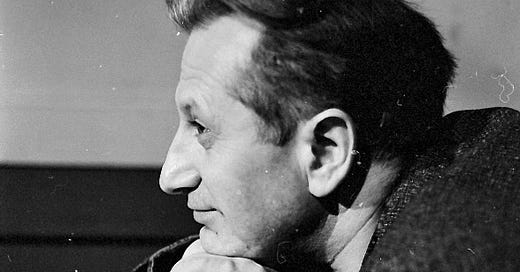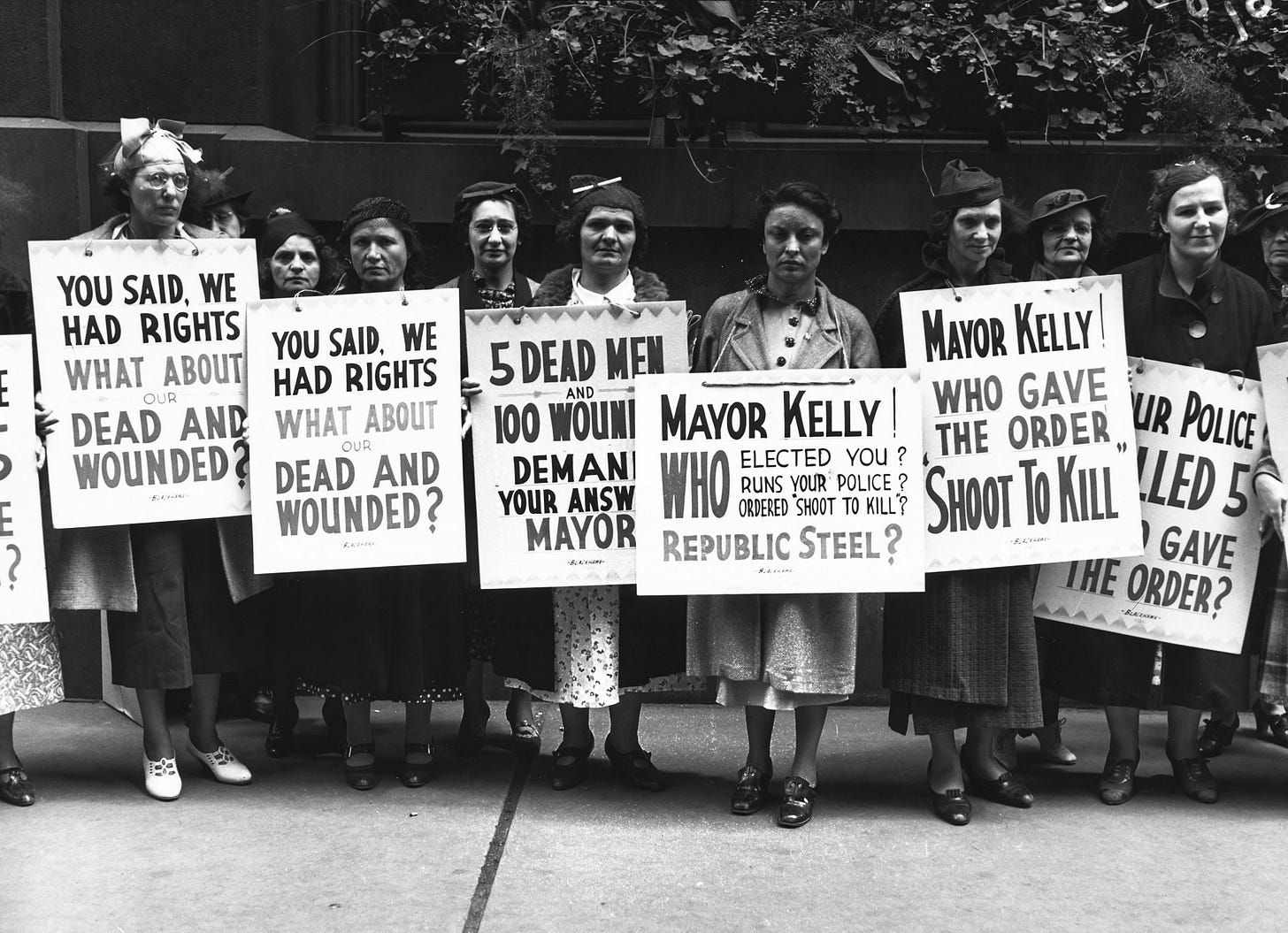First things first. Not much for me to add to the outpouring of love and appreciation for Tina Turner. I will just post what I consider her greatest song, in case you have not seen this particular video. There’s a long story behind it which I also will skip for now, but basically: Phil Spector intended for it to be a massive hit and it fell far short—probably just too late in the ‘60s for this Wall of Sound, times had changed. Tina had not yet emerged with “Proud Mary” nor the Gimme Shelter film. Then there’s the fact that Phil somehow banned Ike from the studio. Anyway, here it is:
Now, onward. Below my appreciation for Studs Terkel and how this relates to my new PBS film and book. The piece has links to both, of course. I did not include one thing: While I did not meet Studs until 1981, I did chat with him over the phone at Crawdaddy in the mid-1970s surrounding a major interview we did with him, and then a piece he wrote for us about being a soap opera villain on the radio. That actually covers the period of his involvement in the aftermath of The Memorial Day Massacre, see below. Read on and then subscribe, it’s still free, as is watching the 27-minute PBS film, now available for all to watch at PBS.org. (If interested, I am scheduled for Democracy Now! radio and TV with Amy Goodman tomorrow, Friday, morning.) Youngish Studs below:
Studs: Still ‘Working’
Studs Terkel, the legendary Chicago radio host, raconteur and author of dozens of books, will probably now become best known to some because one of those books, Working, inspired the new Netflix series of that name from Higher Ground, the production company founded by Barack and Michelle Obama. But I met Studs back in the early 1980s after he wrote a blurb for my first book and then invited me on his radio show in Chicago. We then conversed over the following decades, before his passing in 2008.
Still, I did not know of his intimate connection to one of the most shocking historical incidents in his Chicago until I began research for my new PBS film and companion book, both titled, Memorial Day Massacre: Workers Die, Film Buried. They explore the 1937 tragedy in South Chicago near the old Republic Steel plant when police shot forty strikers and their supporters (hitting most of them in the back or side) and killed ten. The only footage of the incident was suppressed until a famed investigative reporter and a crusading U.S. Senator brought it to light.
Now, nearly 86 years later, Studs provides one of the most significant voices in my film and book, the first oral history on the subject. I’d like to think that Studs—the master of the oral history—would love that.
In 1937, however, he was still a struggling part-time actor. Of course, he was already a political activist. He would reflect on that period: “There were labor battles, historic ones, where the fight for the eight-hour day had begun. It brought the song: ‘Eight hours we’d have for working, eight hours we’d have for play, eight hours for sleeping, in free Ameri-kay.’”
For whatever reason, Studs did not attend the Memorial Day picnic, called by strikers to build support, on the wide Southeast Chicago prairie that led to the massive Republic plant. Organizers suggested that the crowd of 1500 (including many women and children) march toward the distant plant and attempt a mass, legal, picket outside. The ones who tried were stopped halfway there by a contingent of a couple of hundred police. Within minutes, some of the police opened fire with pistols at point blank range and then shot at retreating protesters.
Accounts differ on what set it off. Some of the marchers may have thrown stones and other objects at the police, though hardly at the level that warranted the shootings (and then police waded through the crowd, clubbing many at will). A Paramount News cameraman captured most of this on film.
Studs did make it to the site the following day, to meet strikers and the wounded still being treated at the union’s headquarters nearby, as he recalled: “The day after the massacre, I took a streetcar to the workingman’s bar, Sam’s Place. On this spring afternoon the place is crowded. The men are on strike. Some of them have their arms in slings. Others have bandaged heads. A couple are on crutches. This was a scene out of Matthew Brady’s photos right after Gettysburg. All are in shock. They are among the survivors of a Memorial Day picnic.
“Three of us, members of the Chicago Repertory Group, were called upon…Could we perform at Sam’s Place? Songs, sketches. It would help the morale of the strikers. A guy read a poem. I was an actor in one of the sketches, from Waiting for Lefty.”
Media coverage, both local and nationally (right up to The New York Times), overwhelmingly accepted police accounts of the confrontation—they had to shoot to halt the “mob” who were about to “riot” and invade the plant. Studs would observe: “The Chicago Tribune in those days was headed by sui generis publisher Colonel McCormick, sort of a Colonel Bull Moose figure. He was flailing away at the New Deal daily. One of his former employees called him ‘the finest mind of the 12th century.’ And Colonel McCormick was anti-union, of course. Next to a picture in his paper from Memorial Day of a cop with a club over a fallen worker, was the heading: Worker Attacks Police.”
Paramount, meanwhile, created but then failed to release a newsreel with the footage, claiming they feared it would set off riots in theaters.
A few days after the incident, protesters gathered at the Opera House for a rally. One of the organizers was economist (and later U.S. Senator from Illinois) Paul Douglas. Another was future U.S. Supreme Court Justice Arthur Goldberg. Among the speakers were poet Carl Sandburg and union leader A. Philip Randolph. The police captain who led his forces on the prairie on the day of the massacre, Capt. James Mooney, came in for particular criticism. Studs attended, and recalls in my book:
“It was the most highly-charged event I’d ever attended. I was sitting in the back of the balcony, next to a steel worker. You couldn’t squeeze anyone else in. You could taste the wrath of the audience. Carl Sandburg, who was a great ham, was up there swaying, taking a year-and-a-half to get a sentence out. The steel worker next to me says, Come on.
“The emcee was a gentle old professor named Robert Morss Lovett, who taught literature at the University of Chicago, and he was beloved. ‘Mooney is a killer, Mooney is a killer,’ he said, ‘and we’ve got to stop these killers!’ It was taken up by the whole audience. It had become a roar for justice. I haven’t the foggiest notion what happened to Capt. Mooney. Was he punished? Rewarded? Instantaneously retired?”
In fact, no patrolman or police officials was punished for what happened that day, even after a U.S. Senate probe found them responsible for the massacre. A coroner’s jury judged all of the murders “justifiable homicide.” But Senate staffers had finally brought the Paramount footage to light (you can watch it here).
Studs, of course, went on to great fame as radio host, author and man about town. One of those featured in his bestselling oral history on the Great Depression, Hard Times, would be the doctor who treated the wounded at the site of the 1937 massacre--and provided the crucial testimony to the Senate about the majority having been shot in the back.






I used to watch The Son Of Svengoolie with Studs and Del Close. But the strangest thing about that was the 3 of us didn't have a driver's license!
Looking forward to watching your film on PBS. Your headline about Studs Terkel reminded me of a suppressed Carter admin. OSHA film he narrated "Can't Take No More" (1980) that was censored/recalled when Reagan came into office. They tried to confiscate all the copies, but I interviewed a OSHA safety advocate who saved it and two other films. Here's the story told in 16 minutes. https://www.c-span.org/video/?508284-1/censored-1980-osha-films AND here's the film narrated by Studs: https://www.c-span.org/video/?508421-1/cant-more